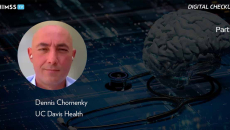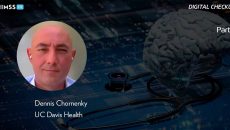Workforce
Burnout was also heavily associated with medication errors, patient safety incidents and other adverse events.
Dr. Tim O'Connell, physician CEO of emtelligent, offers his view of what's needed to ensure artificial intelligence can work safely, effectively and transparently in healthcare settings.
The computing giant says it will phase its roll-out of required multifactor authentication to all users worldwide next year.
Also: Kaiser Permanente reported that an unauthorized party gained access to the email accounts of two workforce members and viewed patient health information.
According to Svava María Atladóttir, chief transformation officer at Iceland's Landspítali National University Hospital, clinical and IT staff are actively collaborating to improve its in-house EHR and clinical portal.
Andy Sajous, a leader in digital transformation, explains. He discusses the trade-offs of building versus buying artificial intelligence tools and describes some crucial actions CIOs should take going into 2025.
And cybersecurity too. "I would definitely encourage folks to go deeper into those other areas and broaden their capabilities overall," says the chief AI adviser at UC Davis Health to those who might want to tackle a similar role.
UC Davis Health chief AI advisor Dennis Chornenky points to knowledge of policy, business strategy, technology and healthcare – as technologies are evolving much more quickly than governance can catch up.
You can't just toss AI onto the CIO or CTO titles. Overseeing artificial intelligence in clinical and business environments, standing up a governance structure, and managing portfolios of tools for different patient types requires deep experience.
Healthcare chief AI officers have to have rare combination of skills, just as complex as the artificial intelligence and machine learning technologies they oversee.









